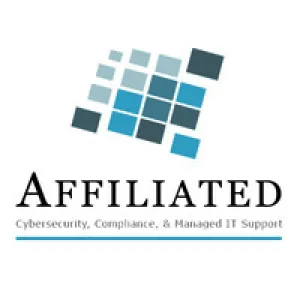September 05, 2025
When it comes to securing cyber liability insurance, most business leaders assume it works like any other policy: apply, pay, and you're covered. But cyber insurance isn't like auto or property coverage. Carriers are tightening their requirements. Underwriters are scrutinizing your IT stack, cybersecurity and data compliance.
And if you don't meet their standards?
You may find your premiums skyrocketing, your coverage limited—or your application denied entirely.
Cyber liability insurers don't just want to know what tools you use. They want to know how you use them, how well they're managed, and whether you have the operational maturity to prevent, detect, and respond to cyber threats.
Here's what they're really looking for—and how Affiliated's Liability-Guard program positions you to not just check the boxes, but own the process.
Why Cyber Insurance Is Getting Harder to Secure
With ransomware and data breaches on the rise, insurers have taken massive hits in recent years. In response, they're raising the bar:
- Detailed IT security questionnaires and audits
- Exclusions for avoidable incidents
- Premium hikes for poor cybersecurity hygiene
- Stricter underwriting reviews and third-party risk scoring
Simply put: insurers are no longer underwriting ignorance.
If you want affordable, comprehensive coverage, you need to demonstrate a mature IT environment that reduces their risk.
The Cyber Insurance Checklist: What Underwriters Expect
Every carrier is different, but most cyber insurance underwriters now expect you to have the following elements in place:
Multi-Factor Authentication (MFA)
Required for:
- Email accounts
- Remote access
- Privileged systems (servers, admin consoles)
MFA is the bare minimum today. No MFA? Expect your application to be rejected.
Endpoint Detection and Response (EDR)
Basic antivirus is no longer enough. Carriers want to see modern threat detection that includes:
- Behavioral analysis
- Isolation capabilities
- Real-time alerting
Data Backup and Recovery Protocols
You need:
- Daily backups (at minimum)
- Offsite or cloud-based backup
- Ransomware-resistant backup environments
- Documented disaster recovery testing
- Clear RTOs and RPOs
Incident Response Plan (IRP)
Don't just say you have a plan—prove it.
- A written, tested IRP
- Defined roles and responsibilities
- Chain of command for decision-making
- Communications strategy (internal and external)
- Legal and regulatory reporting guidance
Employee Security Awareness Training
This includes:
- Ongoing phishing simulations
- Role-based training modules
- Documented participation records
- Remediation training for failed simulations
Patch Management Strategy
Outdated systems are an underwriting red flag. You need to:
- Apply critical updates quickly
- Document your update cadence
- Use automated tools when possible
- Include legacy system risk plans
Vendor Risk Management
Insurers want to know:
- Who your vendors are
- What data they have access to
- How you evaluate and manage their risk
- How you handle third-party breaches
Network Segmentation and Access Controls
This includes:
- Separating sensitive data from standard business traffic
- Role-based access control
- Monitoring lateral movement within the network
Cybersecurity Framework Alignment
Underwriters increasingly look for alignment with standards like:
- NIST Cybersecurity Framework
- CIS Controls
- ISO/IEC 27001
Where Businesses Fall Short
Even companies that take cybersecurity seriously often struggle to check every box. Why?
- Fragmented oversight: No single owner of compliance or risk.
- Lack of documentation: Controls exist, but aren't documented.
- Outdated tools: Legacy antivirus, no mobile device management, old firewalls.
- Assumed coverage: Believing you're covered until a breach proves otherwise.
- Disjointed policies: Security policies don't match actual practices.
- Incomplete assessments: Risk assessments miss third-party threats or internal gaps.
And when insurers find these gaps, they penalize you.
Liability-Guard: Proactive Compliance and Insurance Readiness
Affiliated's Liability-Guard program is built to close these gaps and align your IT posture with insurer expectations.
We don't just hand you a questionnaire and wish you luck. We actively help you:
- Perform a business IT risk assessment aligned to insurer requirements
- Conduct an IT compliance audit with clear remediation plans
- Document your cybersecurity posture to support underwriting and renewal
- Create policies, procedures, and response plans that insurers (and regulators) require
- Provide support during audits or applications to ensure you're covered
- Identify insurer-preferred security controls and integrate them into your environment
The Hidden Benefit: Leverage Your Controls to Lower Premiums
Here's the part most business leaders miss:
When you can prove your business is insured and at low risk, you gain leverage.
- Better coverage terms
- Lower deductibles
- More favorable renewal options
- Broader protection with fewer exclusions
Insurance companies reward operational maturity. Liability-Guard helps you earn it.
You Can't Outsource Responsibility—But You Can Partner Smarter
Cyber liability isn't just a technical concern. It's a business risk. And it requires collaboration across your leadership team, operations, legal, and IT.
Affiliated acts as a bridge between your technical controls and your business priorities. With Liability-Guard, you don't just look ready on paper. You are ready.
Get Started
If you're applying for cyber liability insurance this year—or your renewal is approaching—don't leave it to chance.
Click Here or give us a call at 614-889-6555 to Book a FREE Consult




